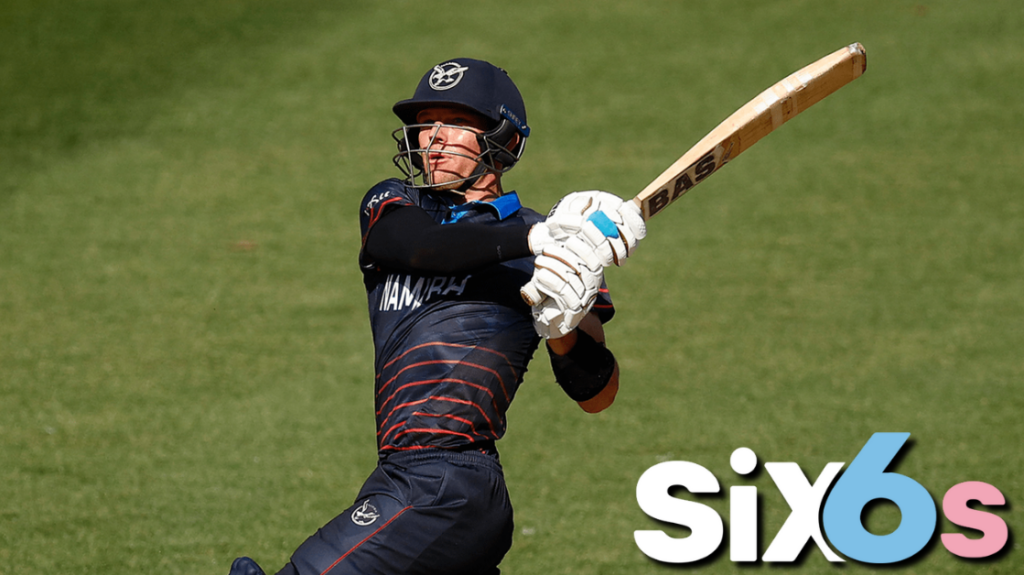With the T20 World Cup 2024 rapidly approaching, cricket fans witnessed a thrilling five-match T20I series between Oman and Namibia. This highly anticipated clash served as a crucial preparation stage for both teams, offering valuable insights into their strengths, weaknesses, and areas for improvement. Let’s delve into five key takeaways from the Oman v Namibia series that shed light on their T20 World Cup aspirations.

The recently concluded Oman v Namibia T20I series was a tightly contested battle between two ambitious Associate nations. Both teams are gearing up for the upcoming T20 World Cup, and this series provided a platform to test their strategies, experiment with different lineups, and assess individual player performances. Here, we explore five key points that emerged from the series, highlighting the exciting prospects and challenges each team faces as they approach the global showpiece.
Erasmus Emerges as Namibia’s All-Round Hero
Leading from the Front: Captain’s Knock and Crucial Wickets
Namibia’s skipper, Gerhard Erasmus, emerged as a central figure throughout the series. He showcased his leadership qualities not only with his tactical decisions but also with his exceptional all-round performance. Erasmus displayed his batting prowess with a crucial knock of 64* off just 29 balls in the series-deciding fifth T20I, guiding his team to a dominant victory. His contribution wasn’t limited to the batting crease; he also chipped in with handy bowling spells, claiming vital wickets at crucial junctures. Erasmus’ ability to perform consistently under pressure underlines his value to the Namibian side and positions him as a key player to watch during the T20 World Cup.
Bowling Depth Offers Flexibility
Namibia’s bowling attack displayed promising signs throughout the series. While their experienced campaigners like JJ Smit and Ruben Trumpelmann provided stability, the emergence of young talents like Malan Kruger, Dylan Leicher, and Simon Shikongo added depth and variety to the attack. Kruger, a right-arm fast bowler, impressed with his pace and wicket-taking ability, while Leicher and Shikongo showcased their skills as spin options. This blend of experience and youth offers valuable flexibility to the Namibian bowling unit, allowing them to adapt their strategies based on the opposition and pitch conditions.
Oman in Transition: Building for the Future
Farewell to Stalwarts, Rise of New Faces
Oman is going through a transitional moment as a number of its most important players from its successful T20 World Cup qualifying campaigns in 2016 and 2021 get closer to the end of their careers. The absence of well-known players like Aaqib Ilyas and Khawar Ali during this series gave newer players a chance to compete for a position in the World Cup roster. Players like Kashyap Prajapati and Pratik Athavale showed signs of promise in a few encouraging outings, demonstrating Oman’s dedication to developing a fresh crop of cricketers.
Aqib Ilyas’ Return: A Glimmer of Hope
The return of seasoned batsman Aaqib Ilyas after battling a rare bone tumor was a significant positive for Oman. His experience and composure at the crease were evident in his crucial knock of 51 in the final T20I. Ilyas’ return bolsters Oman’s batting lineup, providing much-needed stability and guidance to the younger players.
Conclusion:
The Oman v Namibia T20I series served as a valuable stepping stone for both teams on their paths to the T20 World Cup. Namibia’s series victory highlighted their team’s depth and Erasmus’ leadership qualities. Oman, while facing a transition period, showcased promising young talents and the vital return of Aaqib Ilyas. As the T20 World Cup draws closer, these key takeaways offer a glimpse into the strengths and areas for improvement for both Oman and Namibia, making their World Cup campaigns even more intriguing for cricket fans worldwide.
